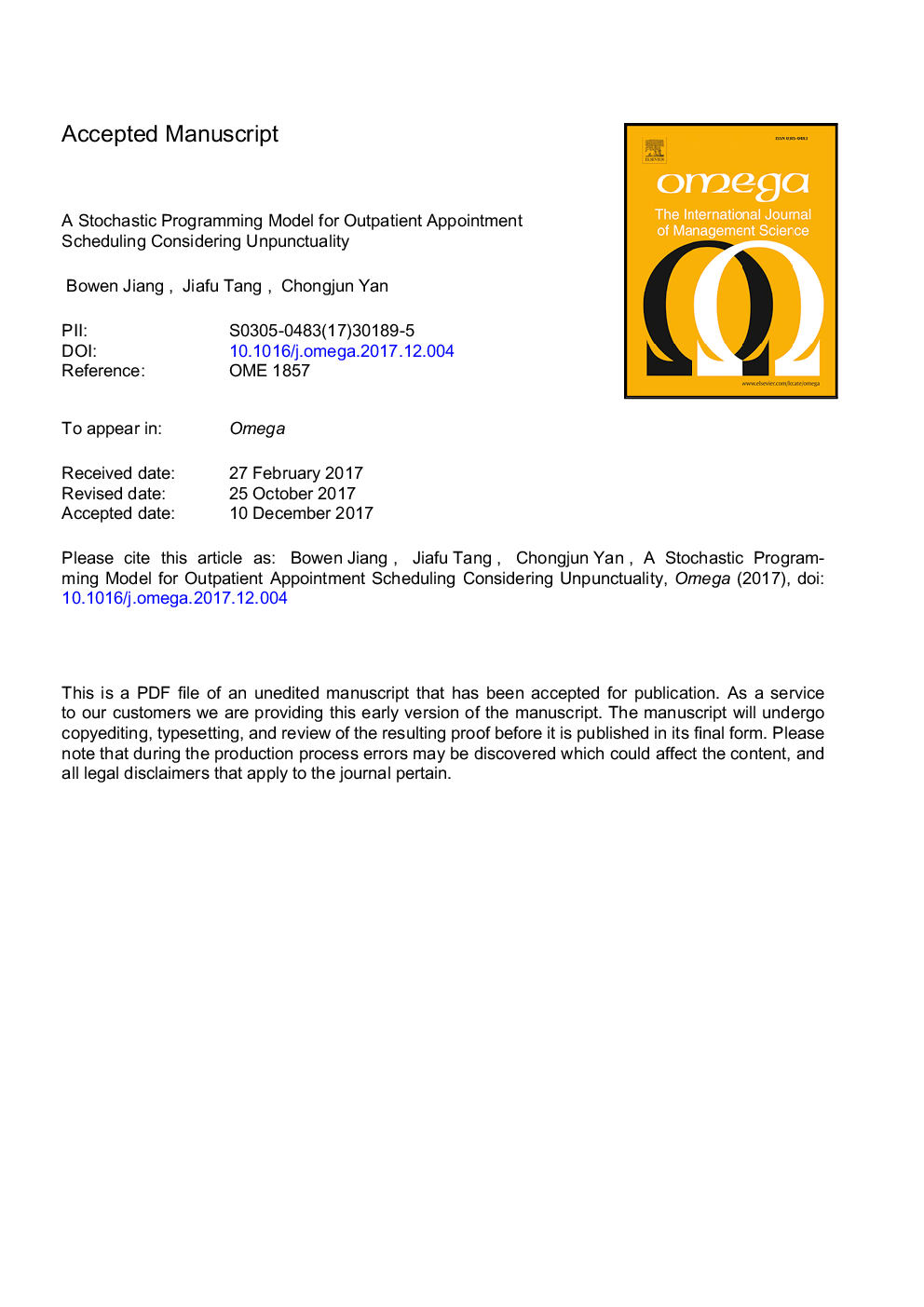| Article ID | Journal | Published Year | Pages | File Type |
|---|---|---|---|---|
| 11011916 | Omega | 2019 | 21 Pages |
Abstract
Many papers on outpatient appointment scheduling assume that patients arrive on time. However, unpunctuality is a stochastic factor that is inevitable in practice, which leads to patients arriving out of order. A schedule may not be reasonable if a clinic neglects the influence of patient unpunctuality. This paper addresses the outpatient scheduling problem considering unpunctuality (OS-U) by developing a stochastic programming model. We compare the performance of the OS-U system with the strict-punctuality (OS-P) system. We illustrate that the model has an exact and unified formula for cases of patients arriving in the appointment order and arriving out of order. The OS-U problem is solved by using Benders decomposition combined with the sample average approximation (BD-SAA) technique to determine the global optimal set of appointment intervals with the goal of minimizing the weighted sum of all patient waiting times, doctor idle times, and overtime. Numerical experiments indicate that the appointment rule changes when considering unpunctuality, although the set of optimal appointment intervals still takes the shape of dome (interval width increases at first, then remains nearly constant and eventually decreases for the last patients). The OS-P system schedules the first two patients together at the start of a session, whereas the OS-U system schedules them with different appointment times and requires a longer slot between the first two patients if patients tend to arrive early rather than late. The variance of unpunctuality has little impact. The no-show probability has a greater influence on system performances in an OS-U system than those in an OS-P system.
Keywords
Related Topics
Social Sciences and Humanities
Business, Management and Accounting
Strategy and Management
Authors
Jiang Bowen, Tang Jiafu, Yan Chongjun,
